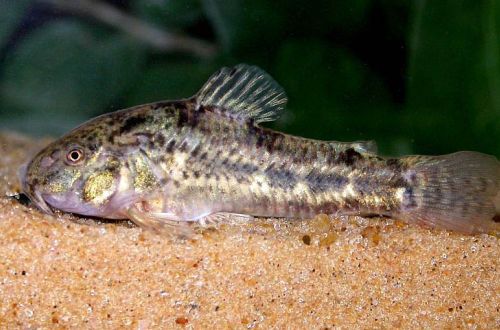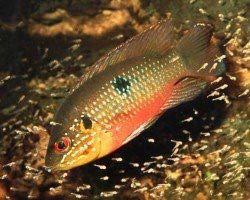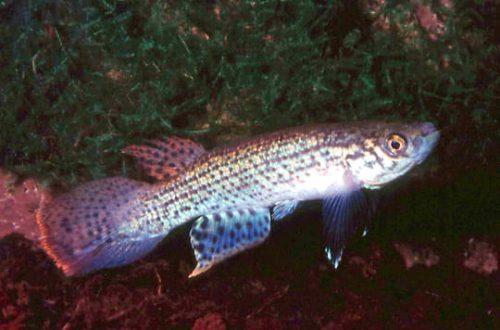
Bocia Berdmora
Birdmore’s Botsia or Red-tailed Tiger Bocilia, also known as Blyth’s char. The scientific name Syncrossus berdmorei belongs to the Cobitidae family. This species can be described as a beautiful fish with character. Thanks to the original drawing, it can decorate any freshwater aquarium. However, minor compatibility issues limit its use. Otherwise, it is unpretentious and will not cause much trouble in maintenance.

Contents
Habitat
It comes from Southeast Asia, from the territory of Myanmar (Burma) and the border Indian state of Manimur. It lives everywhere in the basins of the Irrawaddy, Sitaun, Ataran and other smaller river systems. Prefers slow moving regions in the shade of rainforest. The natural habitat is characterized by very clear water, sandy-stony substrate, many snags and fallen leaves.
Brief information:
- The volume of the aquarium – from 250 liters.
- Temperature – 21-26°C
- Value pH — 6.5–7.5
- Water hardness – soft to medium hard (5-15 dGH)
- Substrate type – sandy or rocky
- Lighting – subdued
- Brackish water – no
- Water movement is weak
- The size of the fish is 20–25 cm.
- Nutrition – any drowning
- Temperament – inhospitable
- Content in a group of at least 5 individuals
Description
Adult individuals reach a length of 20–25 cm. Sexual dimorphism is weakly expressed. The main differences lie in size, males are slightly smaller than females. The body pattern is striped. On a yellow background, rows of dark stripes are evenly spaced. Young fish also have black speckles, which gradually disappear as they grow older. The fins and tail are reddish in color. A similar pattern and coloring are reflected in one of the names of the fish – “tiger Bocilia”.
Food
It feeds on benthic organisms, which it finds with the help of sensitive antennae located near the mouth. The aquarium will accept all types of food. The main condition is that they must be sinking and contain plant components. It is advisable to serve protein foods (frozen bloodworms, brine shrimp, etc.).
Maintenance and care, arrangement of the aquarium
The recommended aquarium size is 250-300 liters for a group of 5 individuals. The design should provide for a sufficient number of shelters that are suitable in size – this is the only important requirement. For example, snags overgrown with mosses or ferns, or other artificial decorative elements. The substrate is sand and gravel with several large stones. Shelters can also be built from these stones, in the form of grottoes, crevices.
Favorable conditions of detention are achieved in conditions of very clean water, weak currents and a subdued level of illumination. A productive filter and weekly renewal of part of the water (30–50% of the volume) with fresh water will help to avoid excessive accumulation of organic waste. Their regular siphon removal is also highly recommended.
Behavior and Compatibility
Keeping a group of at least 5 individuals (the more the better). Aggressive towards small fish. Ornamental species with long fins, such as goldfish, betta, etc., can also suffer from Tiger Bocilia. Fish of similar size, living in the water column or near the bottom, are suitable as aquarium neighbors.
Breeding / breeding
In the wild, spawning is accompanied by long migrations upstream of rivers during the dry and wet seasons. It is not possible to recreate such conditions in aquariums. Loaches are commonly bred on commercial farms using hormones.
Fish diseases
Health problems arise only in case of injuries or when kept in unsuitable conditions, which depresses the immune system and, as a result, provokes the occurrence of any disease. In the event of the appearance of the first symptoms, first of all, it is necessary to check the water for the excess of certain indicators or the presence of dangerous concentrations of toxic substances (nitrites, nitrates, ammonium, etc.). If deviations are found, bring all values back to normal and only then proceed with treatment. Read more about symptoms and treatments in the Aquarium Fish Diseases section.





